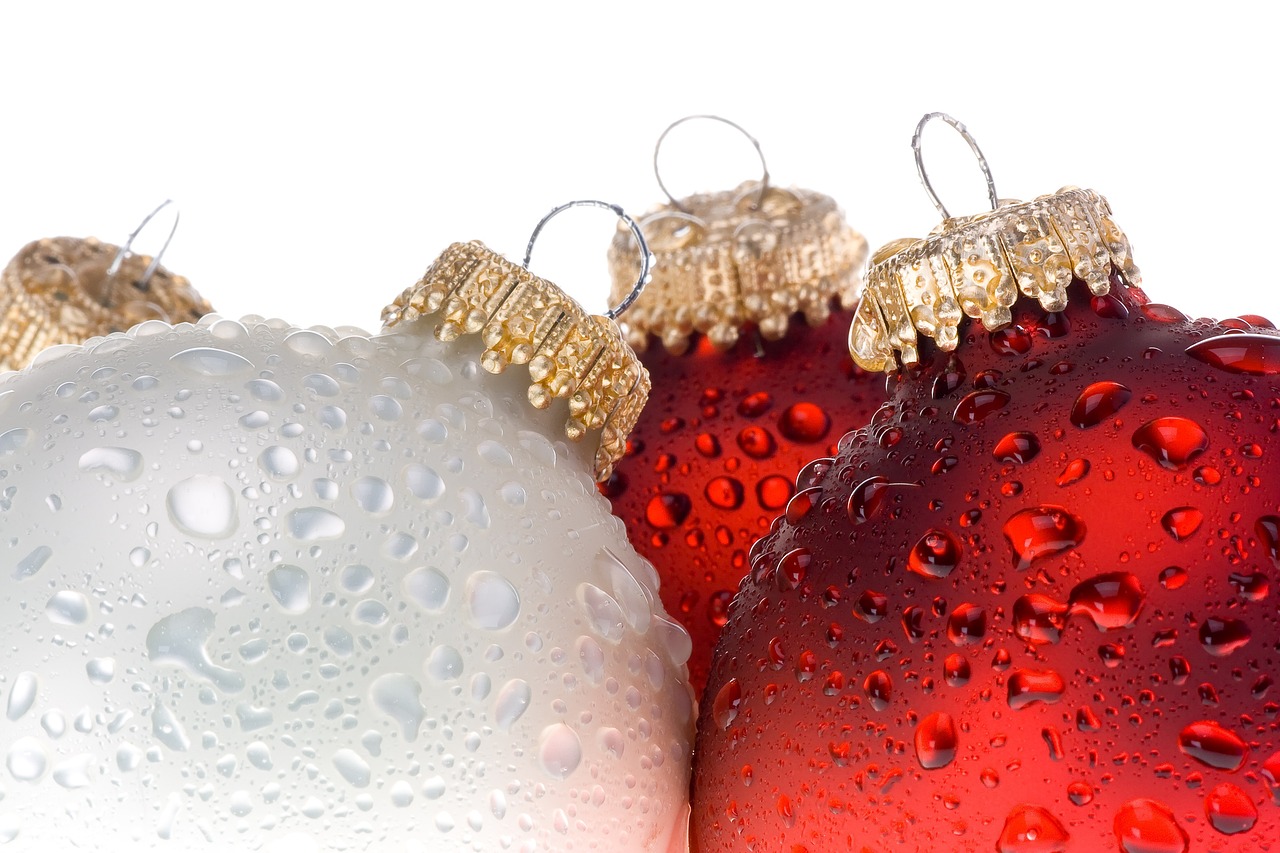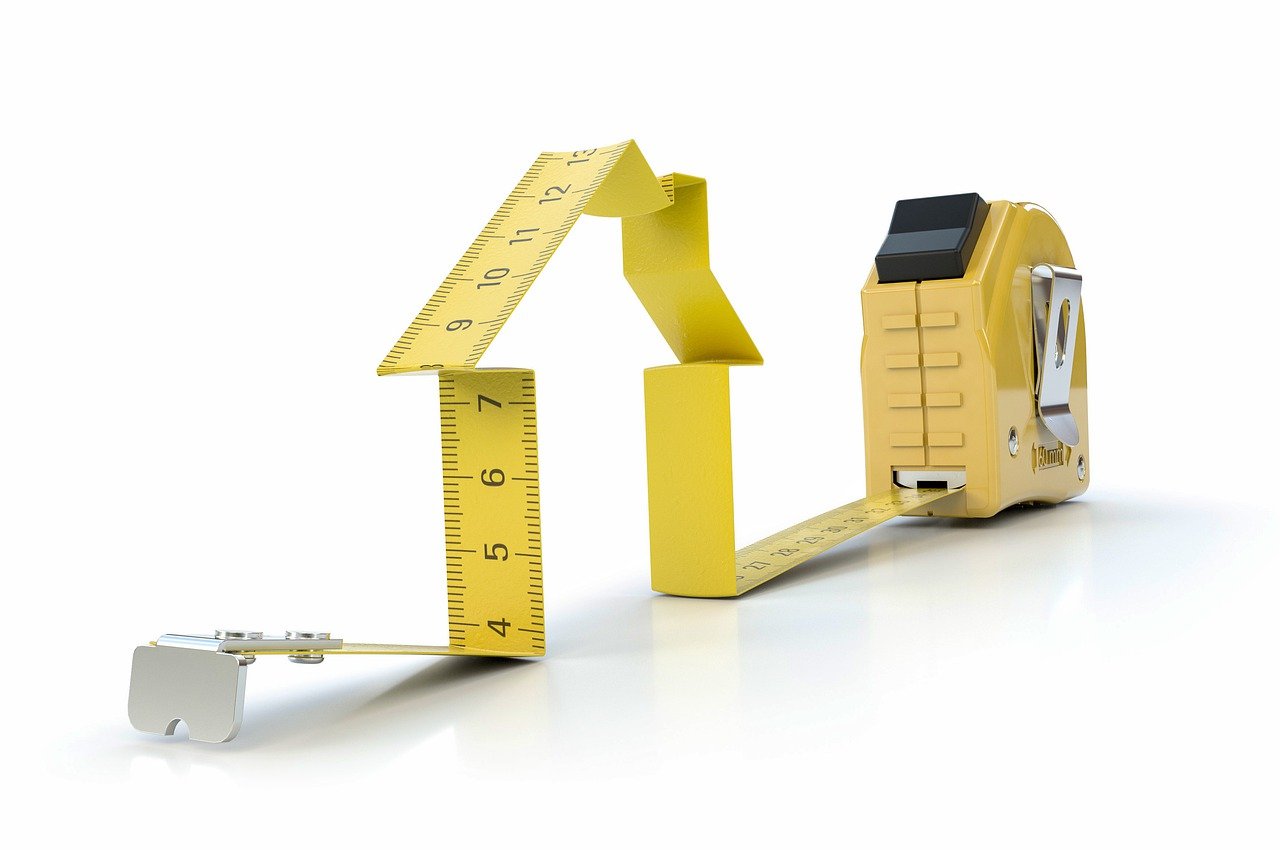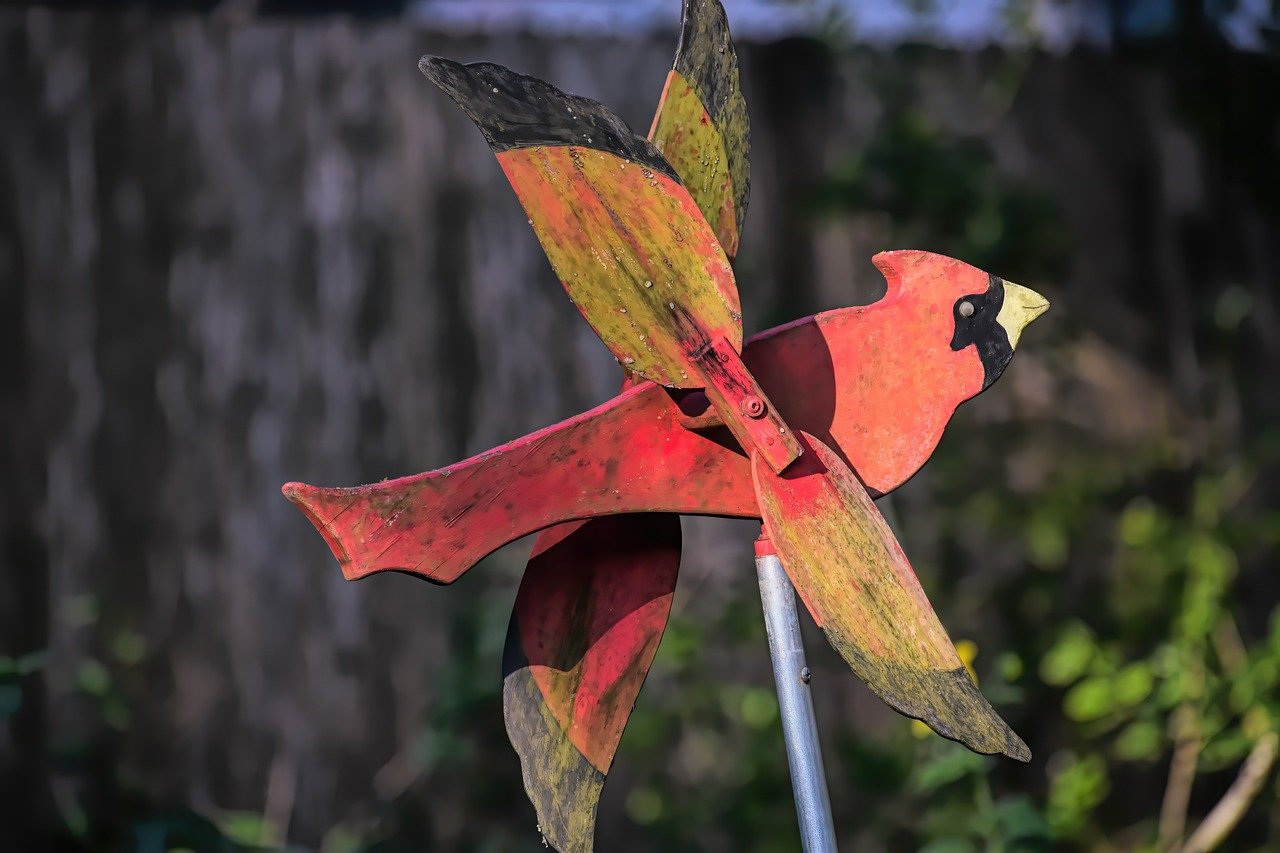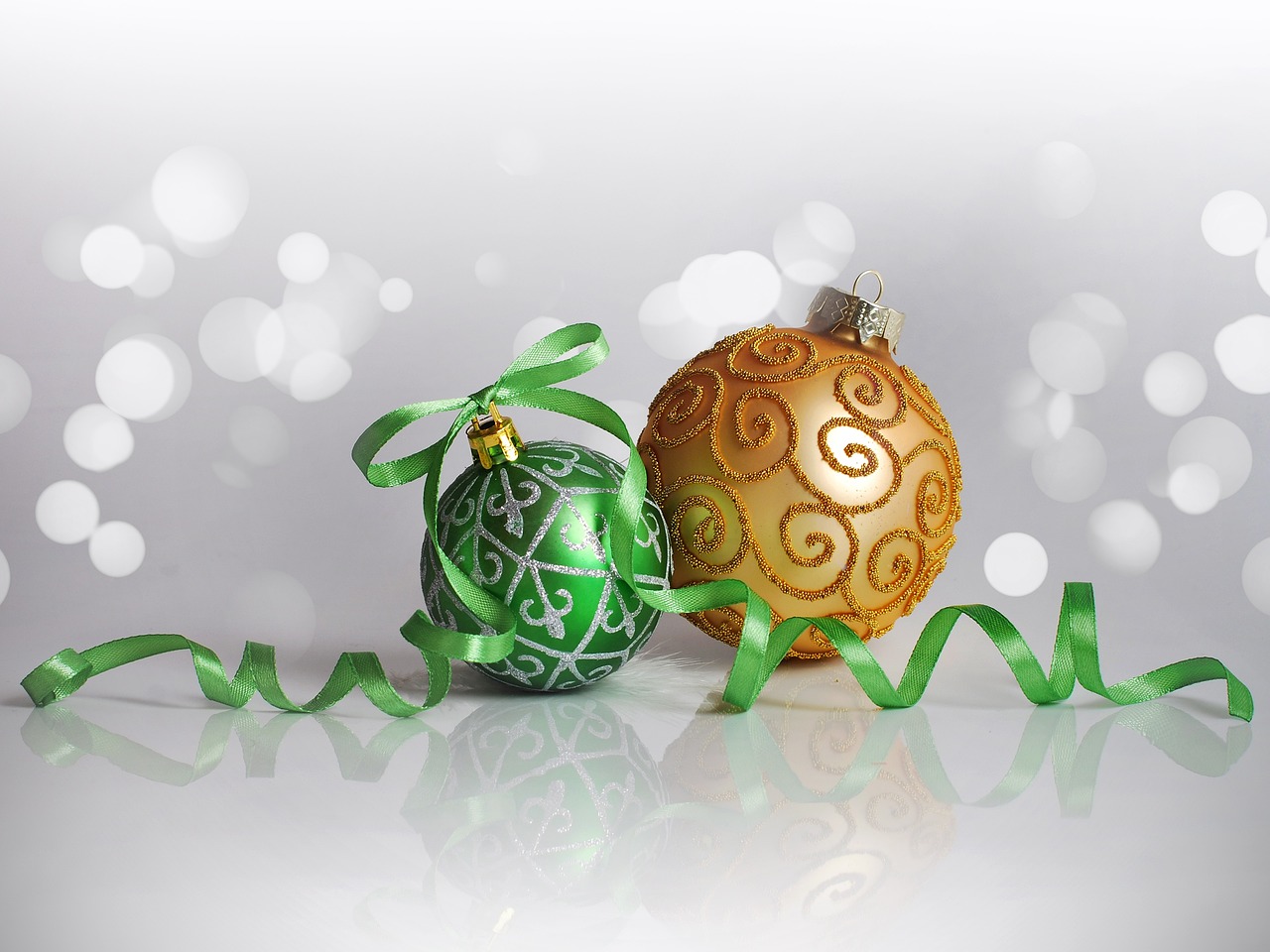Fun DIY Garden Decor using Old Kitchen Items
Are you tired of the same old garden decor? Want to sprinkle some creativity and personality into your outdoor space? If so, you're in the right place! This article explores creative ways to repurpose old kitchen items into charming garden decor. Not only does this add character to your garden, but it also promotes sustainability and creativity. Imagine transforming that old colander or those mismatched teacups into stunning decor pieces that not only look great but also tell a story. Let’s roll up our sleeves and dive into the world of DIY garden decor!
One of the most exciting ways to breathe new life into old kitchen items is by turning them into unique planters. Think about it: instead of tossing out those rusty pots, pans, or even your grandmother's old mixing bowl, why not transform them into beautiful planters? You can create a stunning focal point in your garden with these upcycled treasures. For instance, an old teapot can make a whimsical home for your favorite succulents, while a vintage frying pan can serve as a rustic herb garden. The possibilities are endless!
Old kitchen items can be creatively reimagined into whimsical garden art pieces. This is where your artistic flair comes into play! Picture a garden adorned with colorful, quirky sculptures made from kitchen utensils. Not only do these pieces add a playful touch, but they also showcase your personality. You can use items like old ladles, whisks, and rolling pins to create art that speaks to your unique style. The best part? Each piece will be a conversation starter!
Using old utensils to create wind chimes not only repurposes kitchen items but also adds delightful sounds and movement to your garden. Imagine the gentle tinkling of metal as the wind blows, creating a soothing ambiance that enhances your outdoor experience. It’s like music for your garden! You can mix and match various utensils to create a funky and eclectic look that perfectly complements your garden’s vibe.
Repurposing forks and spoons into chimes provides a unique aesthetic. Just think about the beautiful sounds that can be created when the wind catches these shiny pieces! You can attach the cutlery to a sturdy base and hang them at different lengths for a dynamic effect. Not only will you have a functional piece of art, but you'll also create a serene atmosphere that makes your garden feel more inviting.
An old colander can be transformed into a striking wind chime. Its holes allow light to filter through, creating beautiful patterns on the ground while producing a gentle tinkling sound. You can paint the colander in vibrant colors or leave it rustic for a farmhouse look. Either way, it’s a fantastic way to add charm and character to your outdoor space.
Repurposing old kitchen tools as garden markers can help organize your plants while adding a touch of creativity to your garden layout. Instead of buying generic markers, why not use old spoons or forks? Simply write the names of your herbs or flowers on the handles with permanent markers, and stick them into the soil. This not only helps you keep track of what you’ve planted but also adds a personal touch to your garden.
Old kitchen items like teacups and muffin tins can be transformed into charming bird feeders. Imagine the joy of watching colorful birds flock to your garden, all thanks to your creativity! These feeders not only attract local wildlife but also enhance the natural beauty of your outdoor space. Plus, they make for great conversation pieces!
Teacups can be creatively hung from trees to serve as delightful bird feeders. Picture a colorful teacup swinging gently in the breeze, filled with birdseed. It’s a unique way to enjoy nature while adding a vintage charm to your garden. You can even mix and match different teacups for a fun, eclectic look!
Using muffin tins as bird feeders offers multiple feeding stations for birds, making it a fun and functional addition to your garden decor. Simply fill each cup with birdseed and hang the tin from a tree. Not only will you attract various bird species, but you’ll also create a lively atmosphere in your garden. It’s like throwing a party for your feathered friends!
- What kitchen items can I use for garden decor? Almost anything! Look for old pots, pans, utensils, and even small appliances that you no longer use.
- How do I ensure that the items are safe for plants? Make sure to clean the items thoroughly and check for any harmful coatings before using them as planters.
- Can I paint the items? Absolutely! Use outdoor-safe paint to give your items a fresh look that matches your garden's aesthetic.

Upcycled Planters
Transforming old pots, pans, and kitchen utensils into unique planters is not just a fun project; it’s a fantastic way to enhance your garden's aesthetic while promoting sustainability. Imagine walking through your garden and spotting a vibrant, upcycled planter made from an old teapot or a rusty frying pan. It’s not only eye-catching but also tells a story about creativity and resourcefulness. By using items that might otherwise be discarded, you’re giving them a new lease on life and reducing waste, which is a win-win for both you and the planet!
One of the best parts about upcycled planters is that they come in all shapes and sizes. You can use anything from old colanders to wooden crates. Each item brings its own unique flair to your garden, making it a true reflection of your personality. For example, an old wooden crate can be painted in bright colors and filled with herbs, providing both beauty and functionality. Similarly, a vintage teapot can become a whimsical planter for colorful flowers, adding a touch of nostalgia to your outdoor space.
When selecting items for your upcycled planters, consider the following:
- Drainage: Ensure that your chosen item has proper drainage holes to prevent waterlogging. If not, you can easily drill or poke holes in the bottom.
- Size: Think about the size of the plants you want to grow. Larger items can accommodate bigger plants, while smaller containers are perfect for succulents or herbs.
- Material: Different materials react differently to the elements. Metal can rust, while plastic can fade. Choose wisely based on your garden's environment.
Another exciting aspect of upcycled planters is the opportunity for customization. You can paint, decorate, or even decoupage your planters to match your garden theme. For instance, a distressed look on an old pot can give it a rustic charm, while bright, bold colors can add a pop of fun to your space. Let your imagination run wild! You could even involve your kids in the process, turning it into a family project that encourages creativity and teamwork.
In conclusion, upcycled planters are a creative and sustainable way to enhance your garden. They not only add aesthetic value but also reflect your personal style and commitment to the environment. So, before you toss that old kitchen item into the trash, think about how it could become a beautiful addition to your garden. Who knew that a little creativity could turn your outdoor space into a vibrant oasis?

Whimsical Garden Art
When it comes to adding a splash of personality to your outdoor space, nothing beats the charm of . Imagine stepping into your garden and being greeted by delightful creations made from items that once cluttered your kitchen. Repurposing old kitchen items into art pieces not only gives them a new lease on life but also allows you to express your creativity in a fun and unique way. You might be surprised at how a simple frying pan or a set of mismatched plates can transform into eye-catching decor that sparks joy and conversation.
Let’s dive into some creative ideas! Old kitchen utensils can be reimagined into stunning sculptures or decorative pieces that catch the eye. For instance, you could create a colorful garden totem using stacked plates or bowls. Just imagine a tower of vibrant dishes, each one a different color, catching the sunlight and bringing a smile to anyone who walks by. It’s like a little piece of art that tells a story, reminding you of your culinary adventures.
Another fantastic idea is to use old utensils to create funky wind chimes. Picture this: a gentle breeze rustling through a collection of spoons and forks, creating soothing sounds that enhance the ambiance of your garden. Not only do they serve as a melodic addition, but they also invite a sense of whimsy and playfulness. You can hang them from a tree branch or a garden hook, where they’ll dance and jingle, creating a serene atmosphere perfect for relaxation.
Using old utensils to create wind chimes not only repurposes kitchen items but also adds delightful sounds and movement to your garden, enhancing its ambiance and charm. The beauty of this project lies in its simplicity. Gather some old forks, spoons, and even cookie cutters, and start experimenting! You can arrange them in a way that reflects your style—whether that’s a rustic vibe or a more modern aesthetic. The tinkling sounds they produce will make your garden feel alive, almost like it has a personality of its own.
Repurposing forks and spoons into chimes provides a unique aesthetic while creating soothing sounds that can make your garden feel more inviting and serene. You can choose to paint them in vibrant colors or leave them in their metallic glory for a more classic look. Each time the wind blows, the gentle clinking of the cutlery will remind you of your resourcefulness and creativity, turning your garden into a sanctuary of sound and beauty.
An old colander can be transformed into a striking wind chime, allowing the light to filter through while producing a gentle tinkling sound that enriches the garden experience. The holes in the colander create a unique visual effect as the sunlight streams through, casting playful shadows on the ground. This is not just a decorative piece; it’s a conversation starter, a testament to your ingenuity in turning mundane items into something magical.
As you explore the world of whimsical garden art, don’t hesitate to let your imagination run wild. The possibilities are endless! From colorful sculptures to melodious wind chimes, every piece you create tells a story and adds a personal touch to your garden. So gather those old kitchen items, roll up your sleeves, and let your creativity blossom!
- What kitchen items can I use for garden art? Almost anything! Utensils, pots, pans, and even old dishes can be transformed into artistic pieces.
- Do I need special tools to create garden art? Basic tools like glue, wire, and paint are usually sufficient. You can also use twine or string for hanging items.
- How can I ensure my garden art withstands the weather? Use weather-resistant materials or seal your creations with a protective coating to help them endure the elements.

Funky Wind Chimes
Have you ever thought about how a simple breeze can turn your garden into a symphony of sound? crafted from old kitchen utensils not only add a splash of creativity to your outdoor space but also create delightful melodies that dance in the wind. Imagine stepping into your garden and being greeted by the soothing sounds of clinking metal and gentle tinkling. It’s like your very own musical oasis!
Creating these charming wind chimes is a fantastic way to repurpose items that might otherwise end up in the landfill. You can use an assortment of kitchen utensils such as forks, spoons, and even old measuring cups. The beauty of this project lies in its simplicity and the personal touch you can add. Each chime tells a story, reflecting your unique style and personality.
To get started, gather your materials. Here’s a quick list of items you might consider:
- Old forks and spoons
- Measuring cups
- String or fishing line
- A sturdy branch or a wooden dowel
- Paint (optional, for a splash of color)
Once you have your items, the assembly is where the magic happens! Start by painting your utensils if you want to add some color. Then, using the string, tie each utensil to the branch or dowel at varying lengths. This not only creates visual interest but also ensures that they clang together beautifully when the wind blows. The sound produced will vary depending on the materials used and how they are arranged, so feel free to experiment!
Incorporating funky wind chimes into your garden decor not only enhances the aesthetic appeal but also invites nature closer to your home. Birds and other wildlife are often attracted to the sounds, creating a lively atmosphere. Plus, it’s a wonderful conversation starter when friends and family visit. Imagine sharing the story of how each piece was repurposed and transformed into something delightful!
So go ahead, unleash your creativity, and let the wind chimes sing! Your garden will thank you with every gentle breeze that passes through.
Q: What materials are best for making wind chimes?
A: You can use a variety of materials, but old kitchen utensils like forks, spoons, and measuring cups work wonderfully. Just make sure they are lightweight enough to hang easily.
Q: How do I ensure my wind chimes produce pleasant sounds?
A: Experiment with different materials and lengths of string. The spacing and arrangement of the utensils can greatly affect the sound, so feel free to mix and match!
Q: Where should I hang my wind chimes?
A: Hang them in a spot where they can catch the wind, like near trees or on a porch. Just make sure they are high enough to avoid being knocked over.

Cutlery Chimes
Imagine stepping into your garden and being greeted by the soft, melodic sounds of wind chimes dancing in the breeze. are not just a way to recycle forks and spoons; they are a whimsical addition that brings your outdoor space to life. By repurposing old cutlery, you can create unique chimes that not only look fantastic but also produce soothing sounds that enhance the ambiance of your garden.
The process of making cutlery chimes is surprisingly simple and can be a fun DIY project for the entire family. Start by gathering old utensils that you no longer use. Think about those mismatched forks and spoons that have been collecting dust in your kitchen drawer. You can use different types of cutlery to create a varied soundscape—each piece will produce a distinct tone, adding to the overall melody. Here’s a quick rundown of what you’ll need:
- Old forks and spoons
- A sturdy base (like a wooden branch or an old kitchen pot)
- String or fishing line
- Drill or hammer with nails (for making holes)
- Paint or decorative finishes (optional)
Once you have your materials ready, the fun begins! Start by drilling holes in the handles of your cutlery. If you’re using a hammer and nails, gently tap the nails into the handles to create a hole. Be careful not to damage the utensils too much; you want them to retain their charm. Next, tie lengths of string to each piece of cutlery, ensuring they can swing freely when hung.
Now, attach the cutlery to your chosen base. You can arrange them in a pattern or randomly for a more eclectic look. The key is to ensure they have enough space to move and create sound when the wind blows. Once your chimes are assembled, hang them in a spot where they can catch the wind—perhaps near a window or under a tree. The gentle tinkling of the cutlery will not only attract the attention of passing birds but will also create a serene atmosphere for you to enjoy.
In addition to being a delightful garden feature, cutlery chimes can also reflect your personal style. Consider painting the utensils in vibrant colors or leaving them in their rustic state for a vintage vibe. You could even add beads or other decorative elements to the strings for an extra touch of flair. The possibilities are endless, and this DIY project allows you to express your creativity while contributing to a sustainable lifestyle.
As you sit back and enjoy the sounds of your cutlery chimes, you’ll find that they do more than just decorate your garden. They invite a sense of tranquility and joy, making your outdoor space a true sanctuary. So, the next time you think about tossing out those old forks and spoons, remember that they can be transformed into something magical. Embrace the art of upcycling and let your garden sing!
Q: Can I use any type of cutlery for my chimes?
A: Yes! You can use forks, spoons, and even knives, but ensure that the knives are safely handled if you choose to use them. Mixing different types of cutlery can create a more interesting sound.
Q: How do I ensure my chimes are durable?
A: Make sure to use sturdy materials for the base and secure the cutlery well to withstand outdoor conditions. If you live in a windy area, consider reinforcing the strings.
Q: Can I decorate my cutlery chimes?
A: Absolutely! You can paint them, wrap them with twine, or add beads to the strings. Just make sure any decorations are weather-resistant if you plan to leave them outside.

Colander Wind Chimes
Have you ever looked at an old colander and thought, "What can I do with this kitchen relic?" Well, the answer is simple yet delightful: transform it into a stunning wind chime! Not only does this DIY project breathe new life into an item that might otherwise gather dust in your cupboard, but it also adds a whimsical touch to your garden. Imagine the sound of gentle tinkling as the wind dances through your garden, creating a serene atmosphere that invites relaxation and peace.
To create your own colander wind chime, you’ll need a few materials, but don’t worry—most of them can be found around your home or in your local craft store. Here’s a quick list of what you’ll need:
- Old colander (preferably metal for better sound)
- Strong string or fishing line
- Assorted beads or small metal objects (like washers or bells)
- Drill or a sharp object to make holes (if your colander doesn’t have any)
- Optional: paint or decorative elements to personalize your colander
First, you’ll want to clean your colander thoroughly. Once it’s sparkling, you can decide if you want to give it a splash of color with some outdoor paint. After your colander is prepped and dry, it’s time to make holes in the bottom of each cup of the colander. This is where you’ll thread your string or fishing line through. You can vary the lengths of the strings for a more dynamic look.
Next, attach your beads or small objects to the ends of the strings. This not only adds visual interest but also enhances the sound produced when the wind blows. The beads will create a delightful melody as they gently collide with the colander. Once you’ve attached all your strings, tie them securely to the center of the colander, ensuring they are evenly spaced for balance.
Finally, find a perfect spot in your garden to hang your new wind chime. Choose a location where the wind can easily reach it, such as near a window or under a tree. As the breeze flows through, you’ll be treated to a beautiful display of movement and sound, creating a magical ambiance that can turn your garden into a serene retreat.
In addition to being a fantastic garden decoration, colander wind chimes are also a conversation starter. Guests will marvel at your creativity and resourcefulness, and you’ll feel a sense of pride knowing you’ve contributed to sustainability by repurposing an old kitchen item. So, why not give it a try? Your garden deserves a touch of charm, and what better way to achieve that than with a delightful colander wind chime!

Garden Markers
Have you ever found yourself wandering through your garden, unsure of which plant is which? are a fantastic way to not only keep track of your plants but also to inject a bit of creativity and personality into your outdoor space. Repurposing old kitchen tools into charming garden markers is a sustainable approach that adds a unique touch to your garden while keeping it organized.
Imagine using an old wooden spoon to label your herbs or a spatula to mark your vegetable rows. These items, once meant for cooking, can now serve as functional art pieces in your garden. Not only do they help you remember what you planted, but they also create a conversation starter for visitors. You can even get your kids involved in the fun—let them paint or decorate the markers with their favorite colors or designs. This not only makes it a family project but also adds a personal touch to your garden.
When creating your garden markers, consider the following ideas:
- Use Old Cutting Boards: Cut them into smaller pieces and write the names of your plants with waterproof paint or a permanent marker. These sturdy markers can withstand the elements.
- Repurpose Tin Cans: Clean and paint old tin cans, then insert a stick or dowel to create a fun and colorful marker.
- Wine Corks: If you have a stash of wine corks, stick them onto a skewer or a small stick, and label them with the plant names. They add a whimsical touch to your garden.
Here’s a quick table summarizing some creative ideas for DIY garden markers:
| Item | How to Use |
|---|---|
| Wooden Spoons | Write plant names on the handle and stick them in the soil. |
| Tin Cans | Paint and label, then stick them in the ground. |
| Wine Corks | Label and attach to skewers for a cute marker. |
| Cutting Boards | Cut into pieces, label, and place in the garden. |
Not only do these markers serve a practical purpose, but they also elevate the visual appeal of your garden. They can be colorful, quirky, and even themed to match your garden's aesthetic. So, don’t toss those old kitchen items just yet; they can be transformed into delightful garden markers that reflect your style!
Q: What materials can I use for DIY garden markers?
A: You can use various materials, including wooden spoons, cutting boards, tin cans, wine corks, and even stones. The key is to choose items that are durable and can withstand outdoor conditions.
Q: How can I make my garden markers waterproof?
A: To make your garden markers waterproof, use waterproof paint or sealants. This will help protect your labels from rain and moisture.
Q: Can I involve my kids in making garden markers?
A: Absolutely! Involving kids can make it a fun family project. Let them paint or decorate the markers, which adds a personal touch and encourages their creativity.

Creative Bird Feeders
When it comes to attracting our feathered friends, why not think outside the box—or the kitchen cabinet, in this case? Old kitchen items can be transformed into charming bird feeders that not only serve a practical purpose but also add a dash of personality to your garden. Imagine sipping your morning coffee while watching colorful birds flit about, all thanks to your creative recycling efforts. It's like bringing a piece of nature right to your doorstep, and it feels wonderful to play a part in supporting local wildlife.
One of the most delightful transformations you can make is using old teacups. These dainty cups can be hung from tree branches, creating an enchanting little café for birds. Just picture it: a beautiful, vintage teacup swaying gently in the breeze, filled with seeds, inviting a variety of birds to come and dine. Not only do they serve as functional feeders, but teacups also add a touch of whimsy and charm to your garden décor. Plus, they’re a great conversation starter! You can even paint or decorate them to match your garden theme.
Another inventive idea is to use muffin tins as bird feeders. This approach is not just creative; it’s also practical! A muffin tin can be hung in a sheltered spot, offering multiple feeding stations for birds. Each cup can hold different types of seeds or even fruit, providing a buffet that attracts a wider variety of birds. It’s like hosting a bird party right in your backyard! Just make sure to keep the feeders clean and refilled regularly to keep your guests happy.
Using these old kitchen items not only promotes sustainability but also enhances the beauty of your garden. You can mix and match various items to create a whimsical feeding station. For instance, consider pairing teacups with muffin tins for a delightful display. The contrast of shapes and colors can create an eye-catching feature in your outdoor space. As you embark on this DIY journey, remember that creativity knows no bounds. Let your imagination run wild!
In addition to being functional, these bird feeders can also serve as a great educational tool for children. They can learn about different bird species, their feeding habits, and the importance of biodiversity. Watching the birds come and go can spark curiosity and encourage a love for nature. Who knew that something as simple as a teacup or muffin tin could foster such a rich learning experience?
So, gather those old kitchen items and get crafting! Not only will you create a welcoming environment for birds, but you’ll also enjoy the satisfaction of upcycling and beautifying your garden. Remember, every small effort counts when it comes to supporting wildlife. Your garden can become a vibrant ecosystem, all starting with a few creative bird feeders!
- How do I ensure the bird feeders are safe for birds? Make sure to clean the feeders regularly and use non-toxic materials. Avoid sharp edges and ensure that there are no harmful substances.
- What types of seeds should I use in my DIY bird feeders? Black oil sunflower seeds, nyjer seeds, and mixed birdseed are great options to attract various bird species.
- Can I use any old kitchen items for bird feeders? Yes, but ensure they are clean and free from any chemicals. Avoid using items that could break easily or have sharp edges.

Teacup Feeders
Have you ever thought about how charming it would be to see little birds flitting around your garden, sipping from dainty teacups? are a delightful way to attract feathered friends while adding a touch of vintage elegance to your outdoor space. Imagine hanging colorful, mismatched teacups from tree branches or garden hooks, each one brimming with seeds. It's not just a feast for the birds, but a visual treat for you and your guests!
Creating your own teacup feeders is surprisingly simple, and you can do it in just a few steps. First, gather your materials. You’ll need:
- Old teacups (the more whimsical, the better!)
- Strong twine or fishing line
- Drill or a sturdy nail
- Birdseed
Now, let’s get to the fun part! Start by using the drill or nail to make a small hole in the bottom of each teacup. This allows for drainage, which is essential to keep the seeds dry and fresh. Next, cut a piece of twine or fishing line, thread it through the hole, and tie a knot to secure it. You can hang the teacup from a tree branch or a decorative hook in your garden.
Once your teacup feeders are hanging, fill them with birdseed and watch as the birds flock to their new dining spots. Not only does this create a lively atmosphere in your garden, but it also encourages biodiversity as various bird species come to visit. Plus, it’s a fantastic conversation starter! Imagine your friends admiring your creativity as they sip their coffee and spot a little finch enjoying a snack from your teacup.
In addition to their aesthetic appeal, teacup feeders are a great way to promote sustainability by repurposing items that might otherwise sit forgotten in your cupboards. It’s a win-win! You get to enjoy the beauty of nature right in your backyard while giving new life to old kitchenware. So, why not grab those vintage teacups and get started on this fun DIY project? Your garden will thank you!
Q: Can I use any type of teacup for the feeders?
A: Absolutely! Feel free to use any teacups you have on hand. Just ensure they are sturdy enough to withstand the elements.
Q: How do I clean the teacup feeders?
A: It's best to clean the feeders regularly to prevent mold. Simply remove the old seeds, wash the teacup with warm soapy water, and rinse thoroughly before refilling.
Q: Will the birds find the teacup feeders easily?
A: Yes! Place the feeders in visible areas, preferably near shrubs or trees where birds feel safe. They will quickly learn to visit your charming teacup feeders.

Muffin Tin Feeders
Have you ever thought about how a simple muffin tin can do more than just bake delicious treats? Well, let me tell you that this kitchen staple can be transformed into a charming bird feeder that not only serves a functional purpose but also adds a unique flair to your garden. Imagine a vibrant muffin tin hanging from a tree, filled with seeds, attracting a variety of colorful birds. It’s like hosting a party for your feathered friends!
Creating muffin tin feeders is surprisingly easy and incredibly rewarding. You can start by gathering an old muffin tin that you no longer use. If it's a bit rusty or worn out, don't worry! This adds character and charm to your garden decor. The beauty of upcycling is that it allows you to give new life to items that might otherwise be discarded. Once you have your muffin tin, you can fill each cup with different types of birdseed, nuts, or even fruits like apples and oranges. This variety not only attracts more birds but also promotes biodiversity in your garden, which is essential for a healthy ecosystem.
To enhance the feeder's appeal, consider hanging it from a sturdy branch using some twine or wire. You can even paint the muffin tin in bright colors or add some decorative elements like ribbons or beads to make it more visually appealing. The goal is to create a feeder that not only provides nourishment for the birds but also makes your garden look lively and inviting.
Here’s a little tip: Position your muffin tin feeder in a spot where you can easily observe the birds. This could be near a window or on your patio. Watching birds flit about, chirping and enjoying the food you've provided, can be incredibly satisfying and brings a sense of connection to nature right in your backyard.
Moreover, muffin tin feeders are not just for birds; they can also attract other wildlife like squirrels and butterflies, adding even more life to your garden. Just be sure to monitor the feeder regularly, refilling it as needed and cleaning it to prevent mold and bacteria buildup. After all, we want our little visitors to be happy and healthy!
In conclusion, turning a muffin tin into a bird feeder is a delightful way to combine creativity with sustainability. It’s a fun project that the whole family can enjoy, and it fosters a love for nature and wildlife. So, grab that old muffin tin and get started on your DIY adventure today!
- How do I clean my muffin tin before making it a bird feeder? It's best to wash it with warm soapy water and let it dry completely to ensure it's safe for the birds.
- What types of seeds should I use? A mix of sunflower seeds, millet, and peanuts is great for attracting a variety of birds.
- How often should I refill the feeder? Check the feeder every few days; refill it as needed, especially during peak bird activity times.
- Can I use a muffin tin that has non-stick coating? It's better to use a regular metal muffin tin, as non-stick coatings may not be safe for birds.
Frequently Asked Questions
- What types of old kitchen items can I use for DIY garden decor?
You can use a variety of old kitchen items such as pots, pans, utensils, teacups, muffin tins, and even colanders. The possibilities are endless! Just look around your kitchen and see what items you might be ready to part with, and get creative!
- How do I ensure that my upcycled planters have proper drainage?
When using items like pots or pans as planters, it's essential to create drainage holes. You can do this by using a drill or a hammer and a nail to poke holes in the bottom. This way, excess water can escape, preventing root rot and keeping your plants healthy.
- Can I use plastic kitchen items for garden decor?
Absolutely! Plastic items can be repurposed too. Just make sure they’re durable enough to withstand the outdoor elements. For example, plastic containers can be painted or decorated to add a pop of color to your garden.
- How do I make wind chimes from old utensils?
To make funky wind chimes, gather some old forks, spoons, and a sturdy base like a wooden dowel or an old colander. Use fishing line or string to hang the utensils from the base. When the wind blows, they’ll create delightful sounds that enhance your garden’s ambiance!
- What’s the best way to hang teacup bird feeders?
For teacup feeders, you can attach a strong wire or twine through the handle of the teacup and hang it from a tree branch. Make sure it’s secure and placed where birds can easily access it. Fill it with birdseed, and enjoy watching your feathered friends!
- Are there any safety concerns when using kitchen items in the garden?
Yes, it's important to ensure that any items you use are clean and free from harmful chemicals. If you’re using items that have been in contact with food, make sure to wash them thoroughly. Avoid using anything that might leach harmful substances into the soil or your plants.
- How can I personalize my garden markers?
You can personalize garden markers by painting them with bright colors or labeling them with the names of your plants using waterproof markers. Old spoons or forks can be bent into shape and used as unique markers that add character to your garden!



















